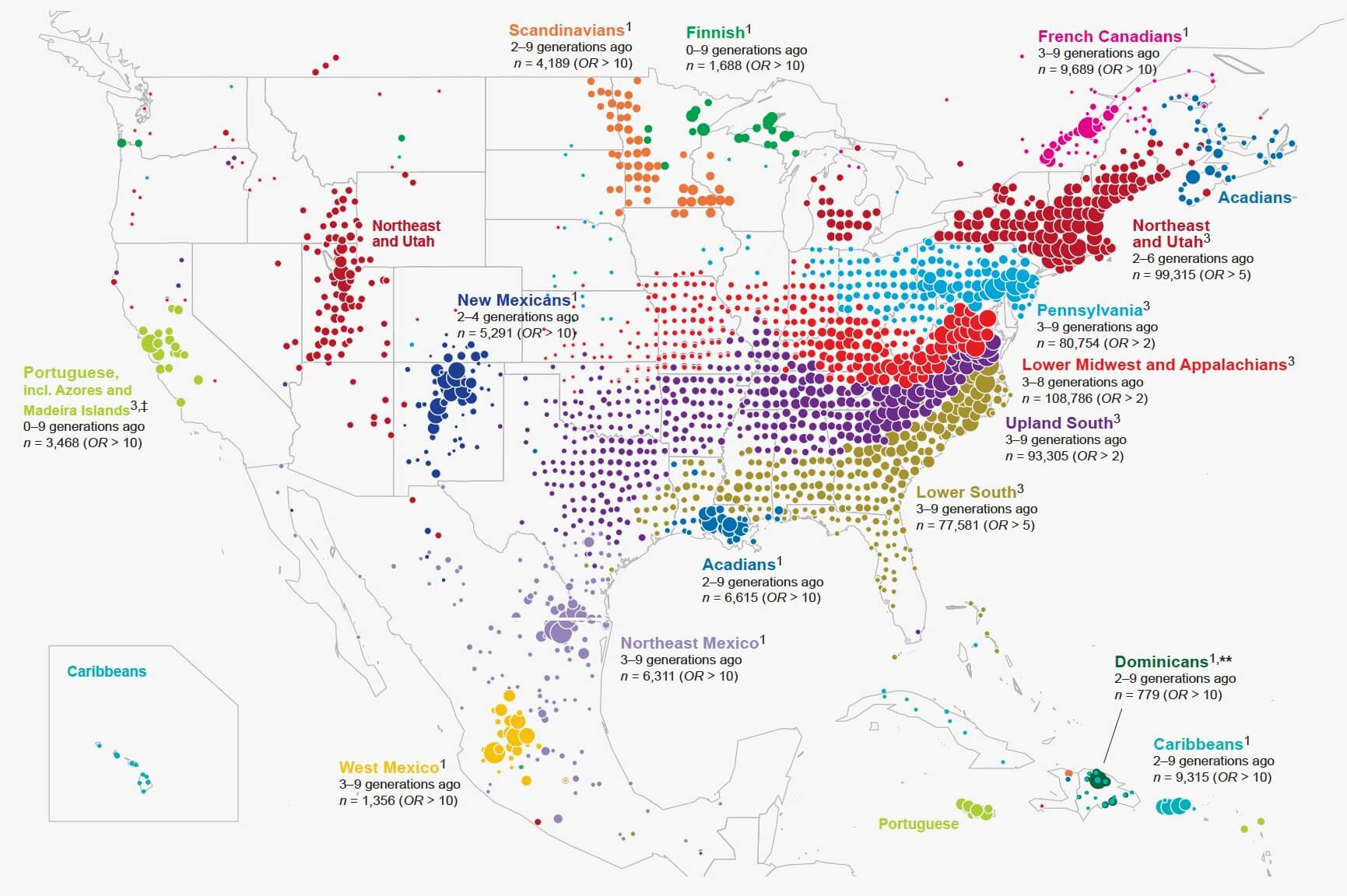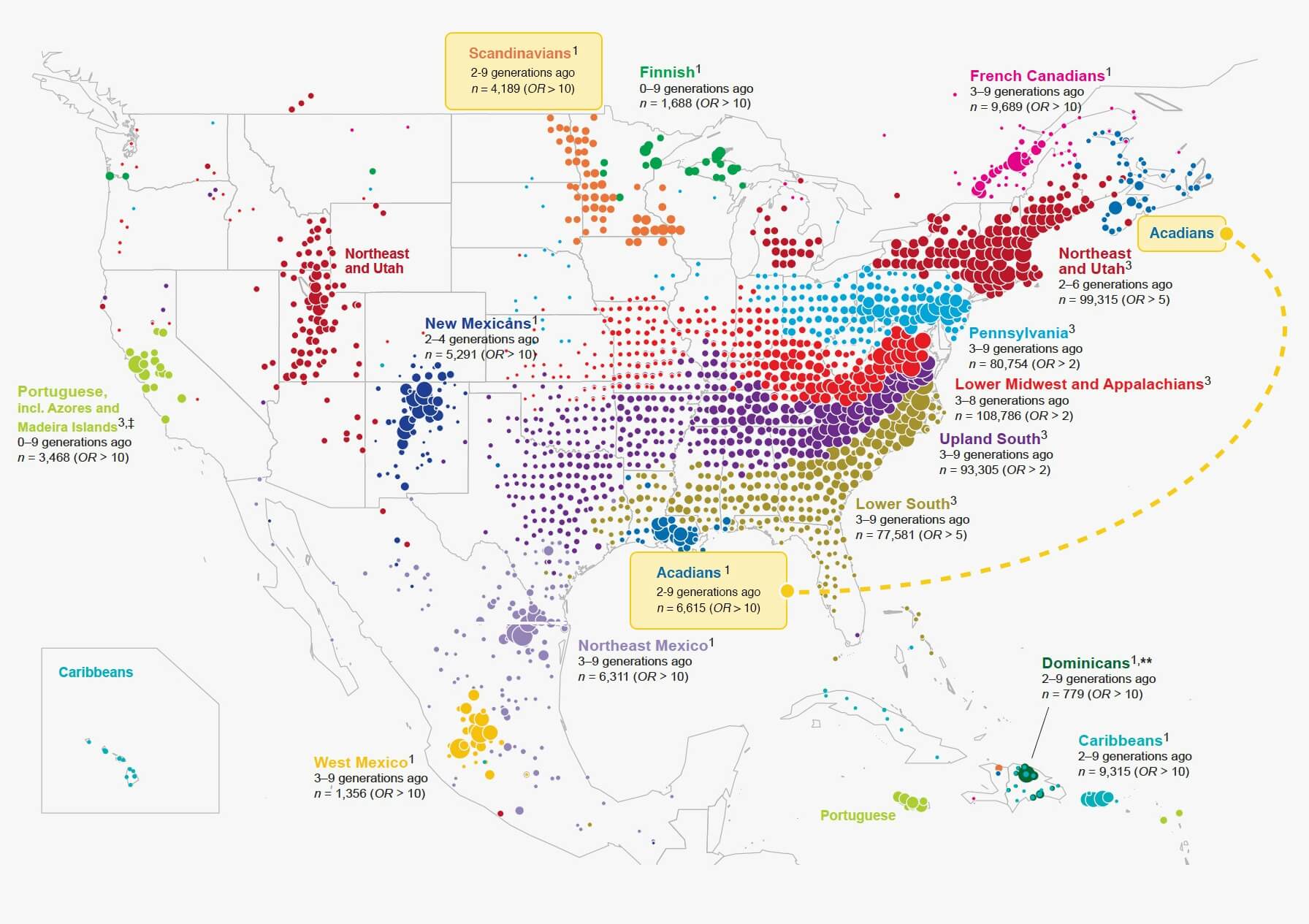What do you do with 770,000 tubes of saliva collected from AncestryDNA customers?
Ancestry® scientists have an unusual answer: create a ground-breaking map of America’s history-based diversity using the genetic data from the analysis of the samples.
This unique map shows this country’s great migrations, the echoes of our pioneer ancestors in our genes today.

What The Map Reveals
Each color on the map represents a present-day community of individuals tied together through their genetics. And the location of the dots show where each community’s ancestors lived over generations.This unique portrait of our country thus reveals that our genes hold the traces of our collective history. But what exactly does the map show?
People moved east to west, less so north to south. See how the differently colored clusters form distinct horizontal bands? The red, blue, purple, and green dots fan out from right to left. This pattern means DNA confirms the descendants of immigrants to the East Coast moved westward.
While people certainly moved back and forth from the north to south as well, if people had moved in the same volume from north to south, you’d see the bands fanning downward and not just from east to west.
But instead you can see powerful forces pushed people westward, even showing that the Mason-Dixon line separates some of the clusters.
Catherine Ball, chief scientific officer at Ancestry and the leader of the study, commented to Wired:
“I have to admit I was surprised by that. This political boundary had the same effect as what you’d expect from a huge desert or mountain range.”And not only can you clearly see the migration patterns westward, you can also see distinct communities of immigrants and their descendants.

Our genes really do show the history of early American communities.
- Acadians fled Canada for Louisiana: On the map you see the same community in Canada and Louisiana – the Acadians. It’s genetic evidence of the migration triggered by the expulsion of Acadians from Canada by the British in the 18th century. They took refuge in Louisiana.
- Scandinavians settled in the Midwest: Scandinavians appear in the orange colored clusters in the Midwest. See how the dots are most prevalent in Minnesota and the Dakotas? This group of people are the descendants of Scandinavians who migrated to these areas – migrations that are well-documented through historical and even census records.
How Does the Science Work?
To create this unique snapshot of our past and present, our researchers first created a network of over 500 million genetic connections between the 770,000 customers in the study.Through network analysis, they were able to take that mind-boggling number of connections and identify dozens of unique genetic communities across the U.S.
The scientists then used a subset of Ancestry’s massive records database, using 20 million family history records to build a map of America’s great migrations.
While the maps here show only North America, scientists also used the data to map the ties between communities in North America, Europe, and other parts of the world.
What Could This Mean to You?
Genetics has the power to tell you things you never dreamed of being able to know from just your spit.As Ancestry’s research continues, the DNA in your spit has the potential to tell you which genetic communities you belong to.
It could tell you where some of your adventurous ancestors lived, where they moved, and the larger historical forces that propelled them from Europe or other continents and across America.
Get started on your path to discovery with an AncestryDNA test today.

No comments:
Post a Comment